Testimonials carry enormous power. According to McKinsey, “word of mouth is the primary factor behind 20 to 50 percent of all purchasing decisions”. Why exactly do testimonials and word of mouth figure so highly in consumer buying patterns?
- Consumers have always trusted recommendations directly expressed to them by a reliable source more than by a company,
- In a marketplace crowded by the marketing of millions of different products and services, word of mouth cuts right through the noise,
- Word of mouth does not result in financial benefits to either the referrer or the listener, and so the level of trust in the disinterestedness of the information is gold standard, and;
- People like to help other people solve their problems by sharing what products worked for them, hence the value of a word of mouth recommendation (it is essential altruistic).
According to McKinsey, word of mouth is so important that it is the only factor that shows up in each of the separate stages of the buying decision journey that an individual consumer sets out on, specifically, initial consideration, active evaluation, and the moment of purchase. See the chart below:
Image source: http://www.mckinsey.com/insights/marketing_sales/a_new_way_to_measure_word-of-mouth_marketing
Statistics on buying psychology back that up. Over 60% of potential customers visiting your site have already sorted through most if not all of the options available to them, pricing comparisons, etc. before they check out the products on your website (according to a CEB survey of 1,400 B2B customers in 2012). This means that the final push to buy (or NOT to buy) happens right there on your page – and chances are that a strong testimonials section will be the deciding factor in moving them from a “maybe” to a “yes”.
In other words, although testimonials and word of mouth are the major factors at every stage of the decision to buy process, it is their key presence right at the top of the sales conversion tunnel that make them essential to any business. Want to increase your conversion rate? You need testimonials.
If you’re interested in the top 6 ways that testimonials can lead to increased sales in your company, then read on!
- Speak in a language that customers understand
Let’s be perfectly honest here – nobody likes to be overtly “sold to.” In this day and age, we are all a bit wary of sales language and can spot it a mile away. The main problem with sales language (as written by marketing people) is that it tends to focus more on the technical features of the product and less on the actual problem the product solves for someone out in the real world.
Testimonials are written by people who’ve bought and used your product, so they’re written from the point of view of someone who had a real-life problem and used the product to solve it. Great – now they can tell you about the product in language that you, as a fellow consumer (and non-sales person) can relate to.
Testimonials might not use the language of sales, or even the right language at all (in the opinion of a marketing copy person), but the language they do use is direct, down-to-earth, honest, and has the ring of authenticity to it that will immediately resonate with potential buyers browsing your site.
Crazy Egg used the power of user-generated language to boost the conversion rates on sales of its main product, the heat map (which shows you what parts of your website customers are visiting and leaving with most frequency). The company had found out, via a survey, that customers didn’t really understand how the heat map worked, despite a very good technical explanation by the site experts.
So Crazy Egg got their existing customers to explain how the product worked, and it was this non-technical explanation that turned out to be exactly the sort of language that potential customers needed to hear. The customer testimonials explaining how the product worked, in their own words, helped to boost conversion rates by 116%!
- Testimonials increase conversion rates – but go further than the bare minimum
Even the simplest test proves that testimonials increase conversion rates. When WikiJobs in the UK created a homepage, they ran a split page test, one with three testimonials (very simple, brief testimonials – nothing fancy), and one without. The test page with the testimonials converted 34% better than the page without.
But going beyond that simple yes-no decision (testimonials versus no testimonials), there are several factors that can determine just how successful your testimonials section will be for you in terms of increasing conversion rates, and these are:
- Placement: Don’t confine testimonials to one section – spread them around so the customer sees testimonials on every page and right next to important “action” buttons such as “place in basket”, “get your free trial now”, and “download your free e-book today”, etc. If you can, cluster testimonials around those key buttons so that the customer’s eyes are drawn to them. Learn about how people view websites and it will help you to place your testimonials in prime areas.
- Use photos: Testimonials that use photos of the people giving them are trusted at a much higher rate than those without – people instinctively trust human faces more than text.
- Use videos: Non-text or video testimonials convert at about 25% higher than pure text testimonials.
- Include the bad reviews as well as the good: Research conducted by Revoo showed that mixing bad reviews in with the good increased conversion rates by 68%, because most people “trust reviews more when they see both good and bad scores” and many will suspect that a perfect score implies that the bad reviews have been filtered out by the company or the good reviews doctored by the company.
- Let others do the selling for you!
Image source: http://malonemediagroup.com/the-power-of-testimonials-getting-your-customers-to-sell-for-you/
You can spend millions of advertising money on telling potential customers how great you are. But it still doesn’t hold a candle to the sheer power of someone else telling everyone how great you are. And the extra advantage to that is that it’s free. If you get your existing customers to sell your product for you, jump on that chance.
Third party testimonials say to the potential buyer:
Hey, I am just like you.
I had a problem, I bought this product, and it worked.
Here’s what I loved about it – X, Y, Z
The potential buyer thinks “Well, if it worked for other people, then it will also work for me.” It’s that simple. A company that is confident that it has a good product, an expanding customer base, and growing brand recognition, can basically hand off the talking to its customers and allow them to sell the products. In fact, 94% of companies who use testimonials from existing customers on their site say that the method is either “very” or “extremely” effective at converting leads.
Image source: http://www.techvalidate.com/blog/customer-evidence-infographic-1723
- Testimonials are more important to customers than price when shopping online
When someone asks you why online shopping has taken off the way it has, your first instinct is to mention how the Internet increases competition thus driving prices down, which in turn brings in the punters. Right? The Internet as the great price leveler.
But it turns out that social proof – the term for proof provided by your peers that the company is what it claims to be, proof that it is trustworthy and honest, and proof that it can deliver what the customer wants (aka testimonials) – ranks higher than price for most people when shopping online.
Image source: http://conversionxl.com/should-i-lower-my-prices/
For example, if a potential customer is looking for a rare book and finds it for $45 on Amazon and $28 on a third party vendor site with little or no customer ratings, it is far more likely that the buyer will choose the Amazon option, even if it is more expensive, because of the high social proof available that Amazon is a trusted retailer. The same logic applies to sites that are Visa Verified versus those who aren’t, and those who have tons of great testimonials dotted around the website versus those who just quote product performance stats.
Testimonials and user reviews lead to trust, and trust leads to sales, it’s as simple as that. In terms of hard data, 63% of customers are more likely to make a purchase from an e-commerce site if it has user reviews and testimonials. Good reviews (as opposed to ones trashing your product) are shown to provide a 18% increase in sales. Now that is hard data that cannot be ignored.
But even bad reviews can lead to increased conversion – after all, it’s in human nature to distrust a uniformly positive review experience (“there has to be some tampering, right?”).
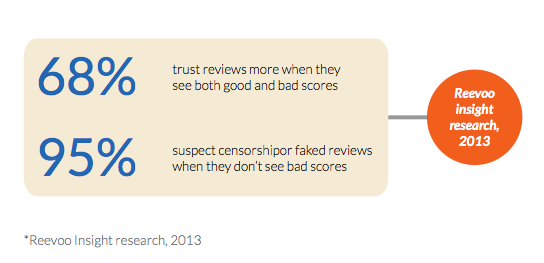 Image source: http://conversionxl.com/how-why-you-should-invest-in-getting-good-testimonials-w-examples/
Image source: http://conversionxl.com/how-why-you-should-invest-in-getting-good-testimonials-w-examples/
- People don’t trust corporations anymore
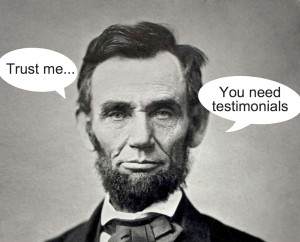 Image source: http://www.business2community.com/digital-marketing/harnessing-power-testimonials-build-credibility-01009837
Image source: http://www.business2community.com/digital-marketing/harnessing-power-testimonials-build-credibility-01009837
This isn’t the hazy world inhabited by sales execs in the 1950’s, where you could spin any tale about your products and have them swallowed hook, line, and sinker by a captive audience (cigarettes are good for you, anyone?). These days, the line between what the companies know and what the consumers know has completely disappeared, and most people go into a purchase with 10.4 sources of information about the product in his or her back pocket.
The upshot is that many consumers don’t trust corporations anymore. There have been too many scandals. We want and need to continue buying products, true – but we no longer trust corporations as sources of information on those same products and services.
According to a survey of American internet users by online video review site EXPO in 2010, consumer reviews are significantly more trusted (nearly 12 times more) than descriptions provided by the manufacturers themselves.
- Know which testimonials to select
Not all testimonials were created equal, of course. Testimonials that are highly specific about the way in which the product or service worked for the client are far more effective at converting leads than those that say generic stuff like “Very satisfied”, or “Great job!”
Harvest and collect these specific testimonials and treat them like the precious resource they are. Don’t ever change the words of a customer, even if you don’t agree with their choice of words, because any allegation of “editing” will cause all trust in your testimonials section to collapse.
A great example of a specific testimonial is below:
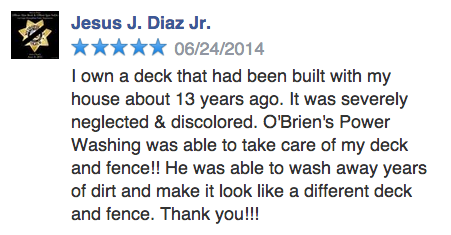 Image source: http://obrienspowerwashing.com/2014/06/customer-testimonials/
Image source: http://obrienspowerwashing.com/2014/06/customer-testimonials/
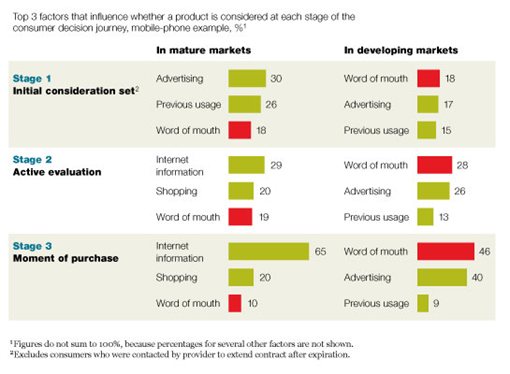

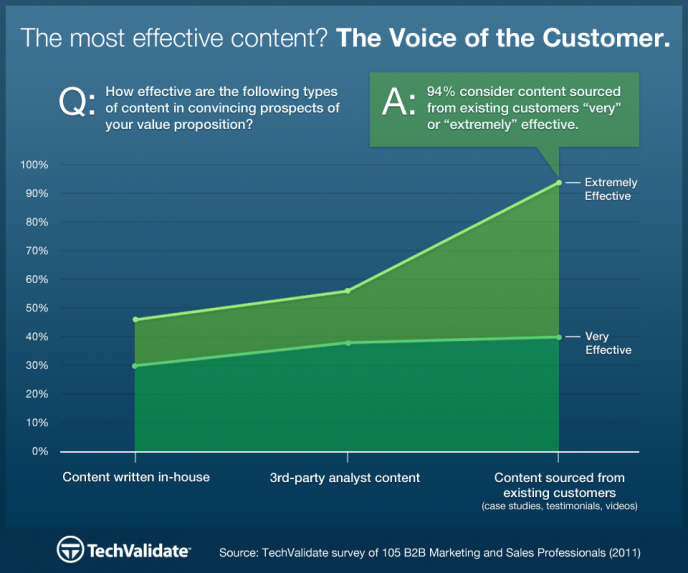
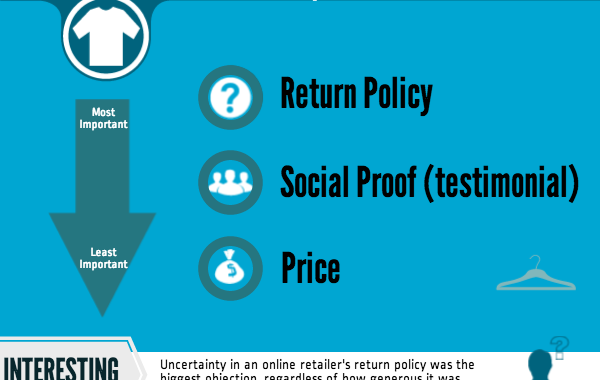
0 Comments on "6 Ways That Testimonials Can Lead to Increased Sales"